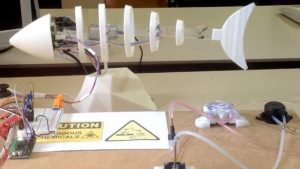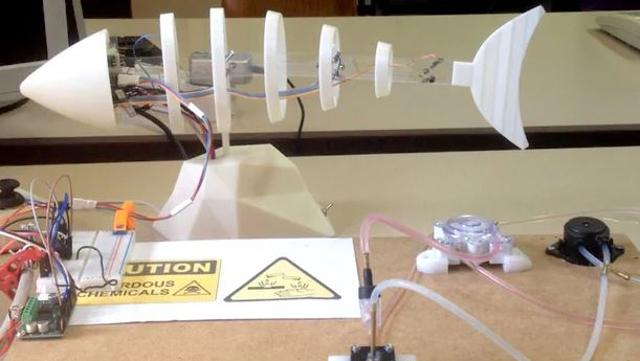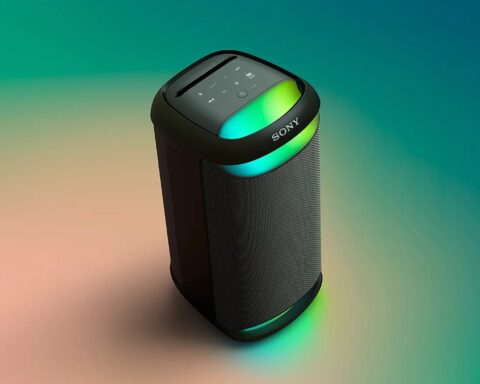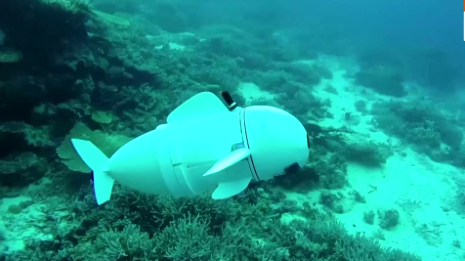
If you’re going to place a robot among fish to learn about water quality, what better form for it to take than a fish itself? This line of thinking has inspired a succession of robotic fishes from scientists wanting to keep disturbances to a minimum, the latest example being a bio-inspired autonomous vehicle designed specifically to track pH levels in aquaculture settings to help keep inhabitants fit and healthy.
Keeping tabs on pH levels in fish farms, where around fifty percent of the world’s seafood is raised according to Universidad Politecnica de Madrid (UPM), is important, because it offers an indication of the water’s acidity and can influence other water quality factors. More acidic waters can cause stress and disease in fish, with one recent study even showing that it can throw their survival instincts out of whack and cause them to swim towards predators.
Looking to provide a new tool for real-time and on-site monitoring of pH levels in these environments, robotics researchers from UPM teamed up with scientists from the University of Florence to build a fish-like underwater vehicle. The vehicle is designed to mimic a fish, and even adapt its motion in response to the water quality as a way of revealing areas with abnormal conditions.
Measuring 30 cm long (12 in) not including the tail, the robot uses shape memory alloy actuators to bend a “backbone” made from 1 mm thick polycarbonate, all wrapped in a latex skin with ribs added for structural stability. When it comes to driving the robot through the water, this system takes its cues from a purpose-made sensor.
Made from polyaniline film (an electrically conductive polymer) on a graphite electrode surface, this sensor monitors pH levels in the vicinity and turns those chemical messages into an electronic signal that then dictates the swimming patterns of the robot. The team carried out preliminary experiments where the pH sensor was used to control the fish’s tail movement, and says that the results serve as a proof-of-concept for the bio-inspired robot as a tool for managing fish farms.
“Thanks to this system that provides early information on environmental change, we can control the parameters of water quality and improve management decisions of fish farms, and consequently, the wellness of these animals,” says UPM’s Claudio Rossi.
1 min read
Robotic fish adjusts its motion to reveal acidic hotspots









